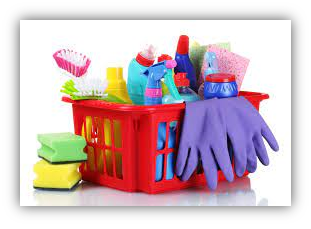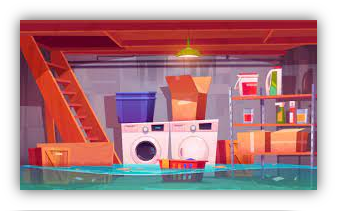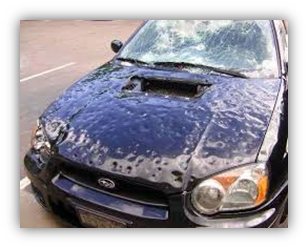Helpful Tips When Dealing with Damage from Summer Storms
 If you have sustained a weather related loss, the first step is to report it. Contact your broker or, if it is an after-hours claim, our website lists each insurance company’s emergency contact number under the “Claims & Losses” page.
If you have sustained a weather related loss, the first step is to report it. Contact your broker or, if it is an after-hours claim, our website lists each insurance company’s emergency contact number under the “Claims & Losses” page.
After a large storm, it is common for more individuals to require remediation services than what is available to them in their community. In order to prevent further damages, they may consider doing the cleanup work themselves instead.
If you choose to complete this work yourself and are anticipating filing a claim with your insurance company, here are a few tips that will assist you with the process.
1. TAKE PICTURES
- Take more pictures than you think are necessary. While it is alright to delete irrelevant pictures, be sure you keep numerous as you cannot take new ones after the scene has been cleared.
- Take snaps from multiple vantage points to capture all aspects of the damaged property. This will help assess the scale of damage. Close-up pictures of damages are good, but they do not assist in assessing damage to scale.
- Take pictures from all four sides (or as many sides as possible) when documenting an automobile.
- Take wide-angle shots of the room or building.
- Use a ruler or another object next to the damage or item to provide sense of size
2. TEMPORARY REPAIRS
- Temporary repairs are made to protect your property from theft and further damage. The goal is to make your property habitable. Use plywood, tarps, or other materials to cover broken windows and damaged rooftops. KEEP RECEIPTS of any materials or services you purchase to make these repairs.
3. CLEAN UP
- While clean up is permitted, take pictures before and after the process to document any items being disposed of and KEEP RECEIPTS for anything that is replaced.
PERILS AND MITIGATION
Water
Mitigating water can be an onerous task, but is an urgent matter as mold can begin to grow within 24 hours! This is why it is very important to remove standing water and any wet materials as soon as possible after a flood. Mold is less likely to grow if the home and furnishings are dry within 48 hours.
Water will intrude and attack material resulting in rotting wood, mold growth, bacteria growth, rusting steel, swelling of composite woods, de-laminating of materials such as plywood’s etc.
Water and Flood clean-up has two immediate dangers: electric shock and sewage contamination.
Electric Shock
- One can avoid electric shock by always wearing rubber boots when standing in the water.
- Shut off the power to the flooded area(s) at the breaker box.
- Keep all extension cords out of the water.
Contamination – There are three types of basement water
 Blackwater is the wastewater from bathrooms and toilets that contains fecal matter and urine. Water from kitchens and dishwashers are also considered blackwater due to the contamination by pathogens and grease.
Blackwater is the wastewater from bathrooms and toilets that contains fecal matter and urine. Water from kitchens and dishwashers are also considered blackwater due to the contamination by pathogens and grease.
Greywater is wastewater from non-toilet plumbing systems such as hand basins, washing machines, showers and baths.
Clean Water would be the equivalent to drinking water
It is very easy for an individual to be infected with a disease when handling blackwater (sewage-contaminated water and materials).
If are not able to acquire assistance for blackwater cleanup, it is recommended that you prepare for the clean up by gathering all equipment and supplies you might need including:
- Disposable globes
- N95 masks
- Rubber boots
- Goggles/protective eyewear
- Pails, mops and sponges
- Plastic garbage bags
- Unscented detergent
- Clean water
Where possible, open windows and doors to provide fresh air.
Rent any larger equipment that you might need e.g. submersible pumps, fans, wet/dry shop vacuums and dehumidifiers. (KEEP RECEIPTS!)
- Remove water mud and other debris.
- Remove standing water with pumps or pails, then with a wet/dry shop vacuum.
- Remove all soaked and dirty materials, as well as debris and residual mud/soil.
- Clean dirty walls and furnishings with unscented soap and water, then dry them with a wet/dry shop vacuum.
- Clean and dry all floors as quickly as possible.
- Remove and discard flooring soaked by floodwater.
- Remove all wet drywall, going at least 30 cm above the flood water level.
- Clean and Dry the basement and salvage possessions.
- Dispose of all wet materials that cannot be dried within 48 hours including:
- Insulation and drywall
- Carpets
- Particleboard furniture
- Mattresses and box springs
- Pillows and cushions,
- Furniture coverings
- TAKE PICTURES BEFORE DIPOSING OF ANYTHING
Once the water and damaged material is removed, the basement/home must be dried out.
- If using a dehumidifier, keep windows closed.
- If using fans, keep windows open.
Vehicles damage due to storms
Water – Alberta’s Vehicle Inspection Regulation requires all motor vehicles that have been submerged in water to a level at or above the bottom of the dash be assigned a status of “non-repairable”. This status is often referred to as being “written off”.
These “flood vehicles” are considered a write off because water ruins electronics, lubricants, and mechanical systems. It may take months or years, but corrosion can find its way to the car’s vital electronics, including airbag controllers.
Hail Damage – Most often vehicles damaged by hail are repaired, but there times when the hail damage is so severe the repairs are more than the vehicle’s market value. In these cases, the vehicle is deemed an economical loss and written off. In the past number of years, some insurance companies have permitted owners to purchase the their severely hail-damaged vehicles back as salvage. The company will provide future insurance for these vehicles with a stipulation that a Hail Damage Exclusion Endorsement is applied. This limits the owner from ever claiming any future hail damage on the salvaged vehicle.
hail damage is so severe the repairs are more than the vehicle’s market value. In these cases, the vehicle is deemed an economical loss and written off. In the past number of years, some insurance companies have permitted owners to purchase the their severely hail-damaged vehicles back as salvage. The company will provide future insurance for these vehicles with a stipulation that a Hail Damage Exclusion Endorsement is applied. This limits the owner from ever claiming any future hail damage on the salvaged vehicle.